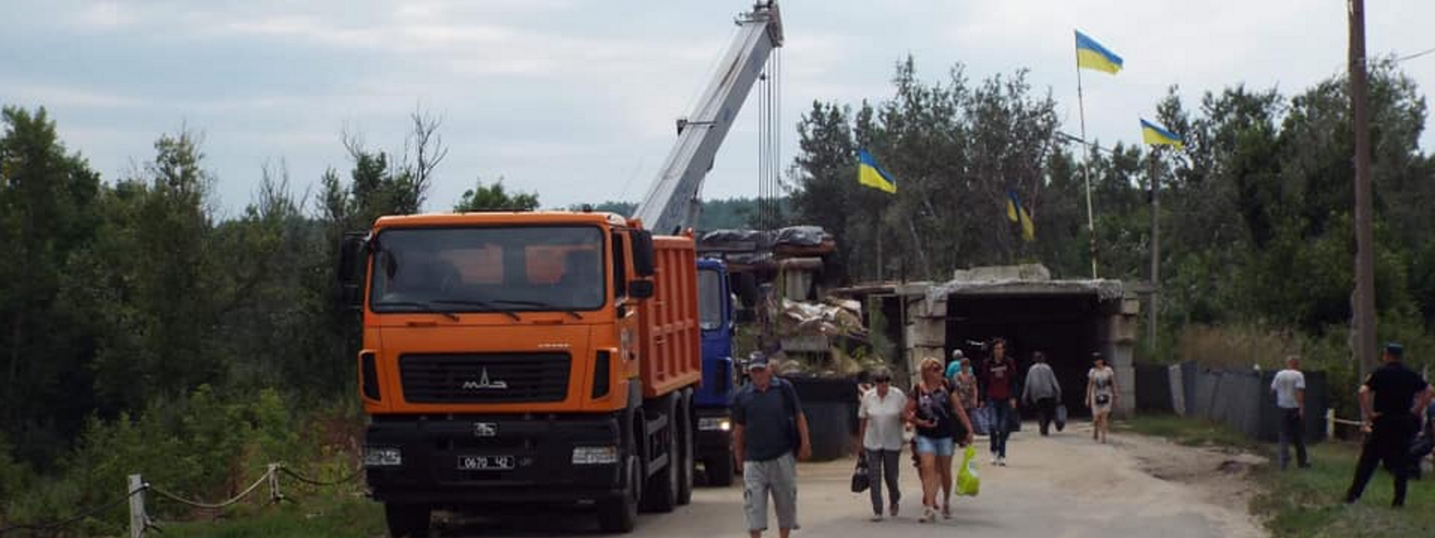Disengagement holds in Stanytsia Luhanska
Stanytsia Luhanska disengagement area sees ratification, dismantlement of positions, and reconstruction.
Disengagement holds in Stanytsia Luhanska

Stanytsia Luhanska disengagement area sees ratification, dismantlement of positions, and reconstruction.

After Ukrainian and Russia-backed separatist negotiators finalized and implemented an agreement on disengagement in July, progress is showing in Stanytsia Luhanska disengagement area in the Luhansk Oblast of eastern Ukraine and one of the main transit points for civilians crossing between government-controlled and non-government-controlled territory in the region. As disengagement appears to go according to plan in Stanytsia Luhanska, agreements have been made to attempt similar withdrawals in the two other disengagement areas near Petrivske and Zolote.

The situation at the Stanytsia Luhanska disengagement area has been relatively calm throughout the conflict. Even prior to the announced pull-back, both sides exercised relative restraint in this area, likely in part because of its role as a major civilian transit point. The two other disengagement areas, particularly the one located near Zolote, have been less successful and have been plagued with frequent ceasefire and pull-back violations, as the DFRLab previously reported.
On June 29, 2019, the Organization for Security and Co-operation in Europe (OSCE) Special Monitoring Mission (SMM) to Ukraine received notification from the Ukrainian Ministry of Foreign Affairs that the Ukrainian Armed Forces had completed disengagement within the designated area. The following day, the SMM received a similar notification from Russia-backed separatists.

The DFRLab has an online interactive version of the above map available for public view and download, available here.
In early July, Ukrainian President Volodymyr Zelenskiy traveled to the disengagement area and vowed to repair the bridge, as the broken section of the bridge makes it difficult for the disabled and elderly to cross. Elderly people in particular need to cross frequently into government-held territory in order to collect their pensions.
A decision reached by the Trilateral Contact Group (TCG) on July 17 outlined additional specifics in regard to infrastructure repairs in the area. The TCG comprises representatives from Ukraine, Russia, and the OSCE and is a forum through which the sides can notionally facilitate a diplomatic resolution to the war. The Ukrainian side is responsible for repairing the broken section of the bridge, while the self-declared Luhansk People’s Republic (LNR) will repair the roads and fences. Prior to beginning the repairs, however, both sides had to simultaneously dismantle their forward positions.
Demining operations began as a first step toward the repair of the bridge but encountered a setback, which a statement by the Joint Forces Operation attributed to a lack of security guarantees for Ukrainian government demining teams.
By late September, the foundation was laid for a temporary bridge structure that will redirect traffic during bridge repairs. The bridge can currently be seen in a livestream operated by the Ukrainian government, from the perspective of a camera located on the northern side of the broken bridge section.
This temporary bridge already greatly enhances mobility of elderly and other people with challenged mobility, since they no longer need to traverse steep wooden ramps in order to cross the bridge.
The trend at the Stanytsia Luhanska disengagement area has inspired a cautious optimism for peace in the Donbas region, paving the way for talk of upholding the other two disengagement areas and even withdrawal along the entire line of contact. Stanytsia Luhanska has, however, historically been a location with minimal incidents in the past few years. Disengagement in other areas may prove more difficult.
Follow along for more in-depth analysis from our #DigitalSherlocks.

